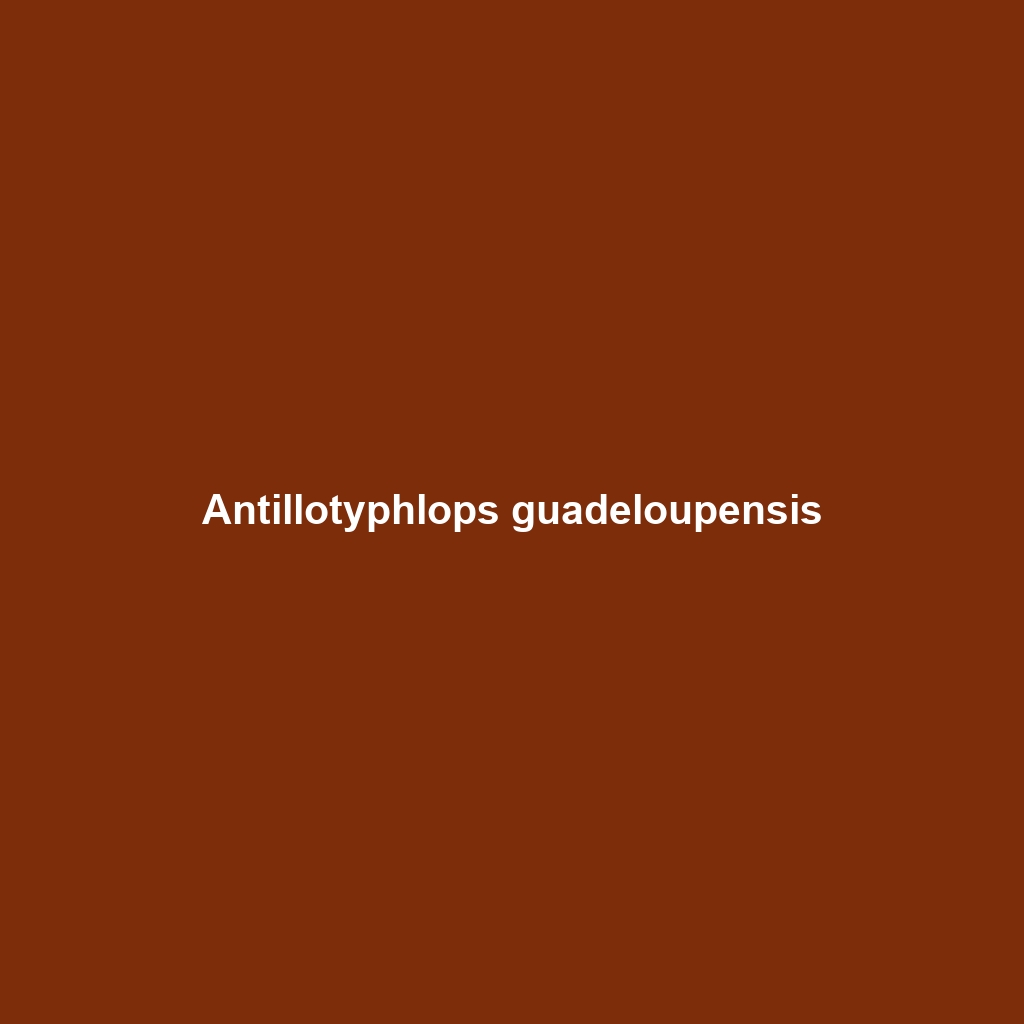Antillotyphlops guadeloupensis: A Comprehensive Species Description
Common Name: Antillotyphlops guadeloupensis
Scientific Name: Antillotyphlops guadeloupensis
Habitat
Antillotyphlops guadeloupensis, commonly known as the Guadeloupe blind snake, is primarily found on the island of Guadeloupe in the Lesser Antilles. This species prefers moist and humid environments, typically inhabiting forested areas, grasslands, and agricultural zones. Its presence is often associated with loose, sandy soils which facilitate its burrowing behavior, making it ideal for this fossorial lifestyle.
Physical Characteristics
The Guadeloupe blind snake measures approximately 30 to 60 centimeters in length, with a cylindrical body that allows it to navigate through the substrate. Its coloration ranges from a pale pink to a reddish-brown hue, often with faint darker bands. Characteristically, Antillotyphlops guadeloupensis exhibits small, vestigial eyes, hidden beneath the scales, emphasizing its adaptation to a subterranean lifestyle. The smooth, shiny scales contribute to its streamlined shape, allowing it to move effortlessly underground.
Behavior
Antillotyphlops guadeloupensis is predominantly nocturnal, emerging at night to feed and mate. This species exhibits burrowing behaviors, using its blunt snout to dig through soil and leaf litter. They display a solitary nature, often being found alone except during the mating season. Their low visibility in the ecosystem makes them a less studied species, yet they play a critical role in soil aeration and pest control.
Diet
The diet of Antillotyphlops guadeloupensis generally consists of soft-bodied invertebrates, particularly termites and ants, which they locate through their sensitive snouts. This feeding habit emphasizes their role in controlling insect populations within their habitat, making them an integral part of the ecological balance.
Reproduction
Reproductive activity in Antillotyphlops guadeloupensis typically occurs in the spring and summer months. Mating often involves complex courtship behaviors, leading to the laying of eggs in moist, secluded areas. The female usually lays a clutch of 3 to 10 eggs, which are then incubated in the environment until hatching. Offspring are born as miniature versions of adults, independent from birth.
Conservation Status
The current conservation status of Antillotyphlops guadeloupensis is listed as vulnerable due to habitat loss and degradation caused by agricultural expansion and urban development. Conservation efforts are essential to protect its remaining habitats and ensure the survival of this unique species.
Interesting Facts
- Antillotyphlops guadeloupensis is often mistaken for a worm due to its elongated and limbless appearance.
- This blind snake is part of a larger family of snakes known as Typhlopidae, which are known for their fossorial lifestyle.
Role in Ecosystem
As a burrowing species, Antillotyphlops guadeloupensis contributes significantly to soil aeration and nutrient cycling. Its diet aids in maintaining the balance of insect populations, which can prevent overpopulation of certain pest species. The ecological interactions of this species highlight its vital role in fostering a healthy and diverse environment within its habitat.
